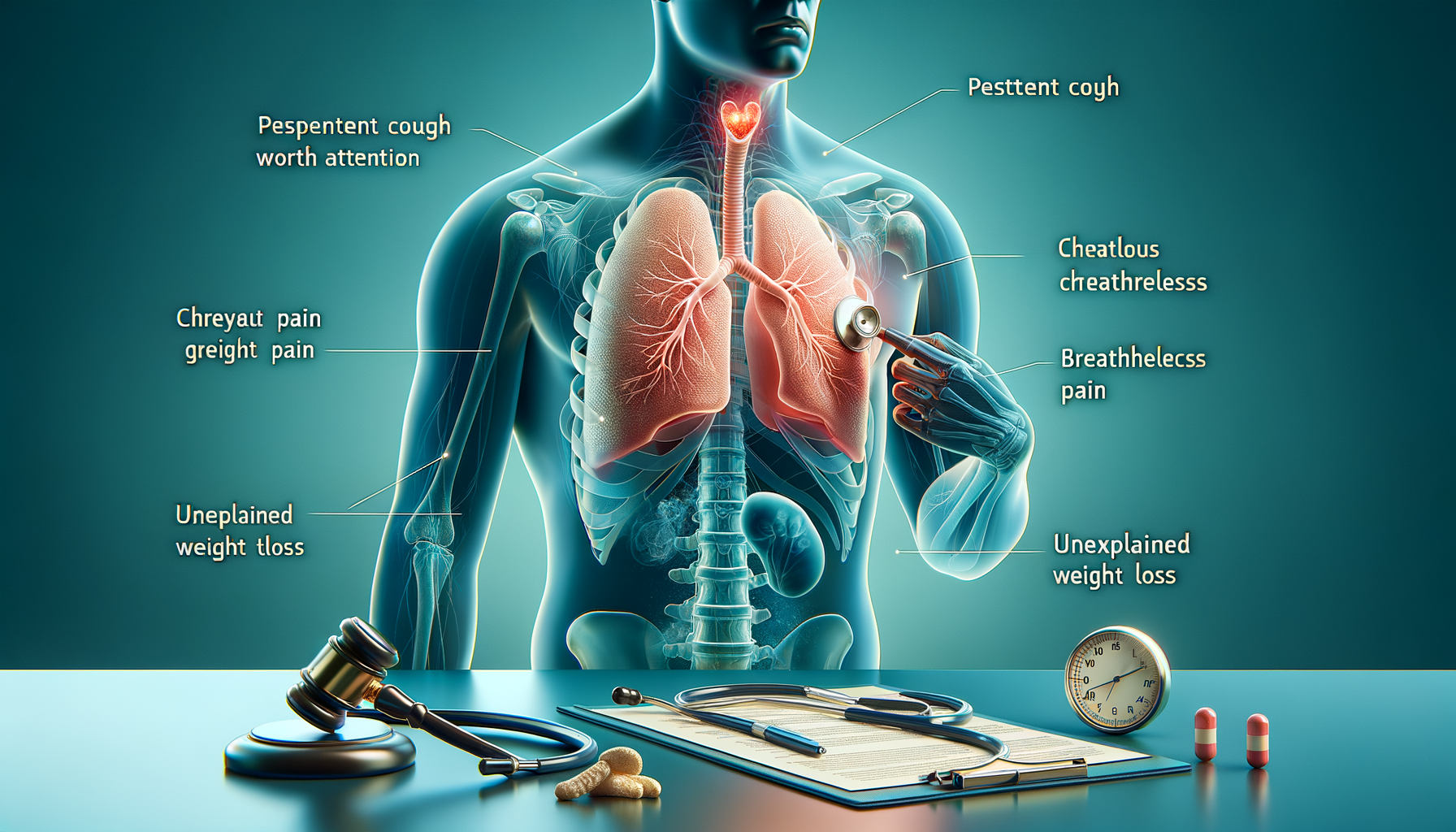Understanding Lung Cancer Symptoms
Lung cancer, a formidable adversary in the realm of health, often presents with symptoms that may initially seem benign. Understanding these symptoms is crucial for early detection and treatment. Common symptoms include a persistent cough that does not go away, coughing up blood, chest pain that worsens with deep breathing or coughing, and unexplained weight loss. Each of these symptoms can be indicative of other health issues as well, which makes it vital to consult a healthcare professional if they persist.
Additionally, other symptoms such as shortness of breath, fatigue, and recurrent respiratory infections like bronchitis or pneumonia can also be signs of lung cancer. The challenge lies in the fact that these symptoms often overlap with those of less severe respiratory conditions. Therefore, it is essential to pay attention to the duration and intensity of these symptoms.
In some cases, individuals may experience wheezing or hoarseness, which can be mistaken for allergies or a cold. However, if these symptoms persist or worsen, they should not be ignored. Early detection significantly improves the chances of successful treatment, making awareness of these symptoms a critical component of lung cancer prevention.
Early Warning Signs of Lung Cancer
Early warning signs of lung cancer can be subtle and easily overlooked. They often manifest as minor health annoyances that people tend to dismiss. One of the earliest signs is a persistent cough that gradually worsens over time. This cough may be dry or produce sputum, and it is often accompanied by a change in the voice, such as hoarseness.
Another key early warning sign is chest pain that is persistent and does not resolve with typical pain relief measures. This pain can be sharp or dull and may be felt in the back or shoulders as well. Often, individuals may notice a significant decrease in energy levels, leading to fatigue that is disproportionate to their level of activity.
Unexplained weight loss and loss of appetite are also early indicators that should not be ignored. These symptoms can occur because the body is using more energy to fight the cancer, or they may be a result of the tumor affecting the digestive system. Recognizing these early signs is crucial for seeking medical advice and potentially catching the disease in its nascent stages.
Methods for Lung Cancer Detection
Detecting lung cancer at an early stage can be life-saving. Several methods are employed by healthcare professionals to diagnose lung cancer. One of the most common methods is imaging tests, such as chest X-rays and CT scans, which can reveal abnormal masses or nodules in the lungs. CT scans are particularly effective as they provide detailed images that can help in identifying smaller lesions that might not be visible on X-rays.
In addition to imaging, sputum cytology is another method used to detect lung cancer. This involves examining the mucus that is coughed up from the lungs under a microscope to look for cancer cells. While it may not detect all types of lung cancer, it can be useful in diagnosing certain cases.
Biopsies are also a critical component of lung cancer detection. A biopsy involves the removal of a small sample of tissue from the lung, which is then analyzed for cancer cells. Techniques such as bronchoscopy, needle biopsy, or surgical biopsy may be used depending on the location and size of the tumor. These diagnostic tools, when used in combination, provide a comprehensive approach to detecting lung cancer.
The Importance of Regular Check-Ups
Regular health check-ups play a crucial role in the early detection of lung cancer. For individuals at higher risk, such as smokers or those with a family history of lung cancer, routine screenings can be particularly beneficial. Low-dose CT scans are recommended for these high-risk groups as they can detect lung cancer at an earlier stage than traditional X-rays.
During routine check-ups, healthcare providers can also assess other risk factors such as exposure to radon, asbestos, or other carcinogens, and provide guidance on reducing these risks. Additionally, regular visits allow for the monitoring of any persistent symptoms and enable timely intervention if necessary.
Engaging in open communication with healthcare providers during these check-ups can lead to early identification of potential issues. This proactive approach is vital in managing health effectively and can significantly improve outcomes for individuals with lung cancer.
Conclusion: Staying Informed and Vigilant
In conclusion, understanding and recognizing the symptoms and early warning signs of lung cancer is essential for early detection and treatment. By being vigilant and informed, individuals can take charge of their health and seek medical advice promptly when symptoms arise. Regular check-ups and screenings, especially for those at higher risk, are crucial in the fight against lung cancer. Staying informed and proactive in health management can make a significant difference in outcomes, underscoring the importance of awareness and education in combating this challenging disease.




Leave a Reply